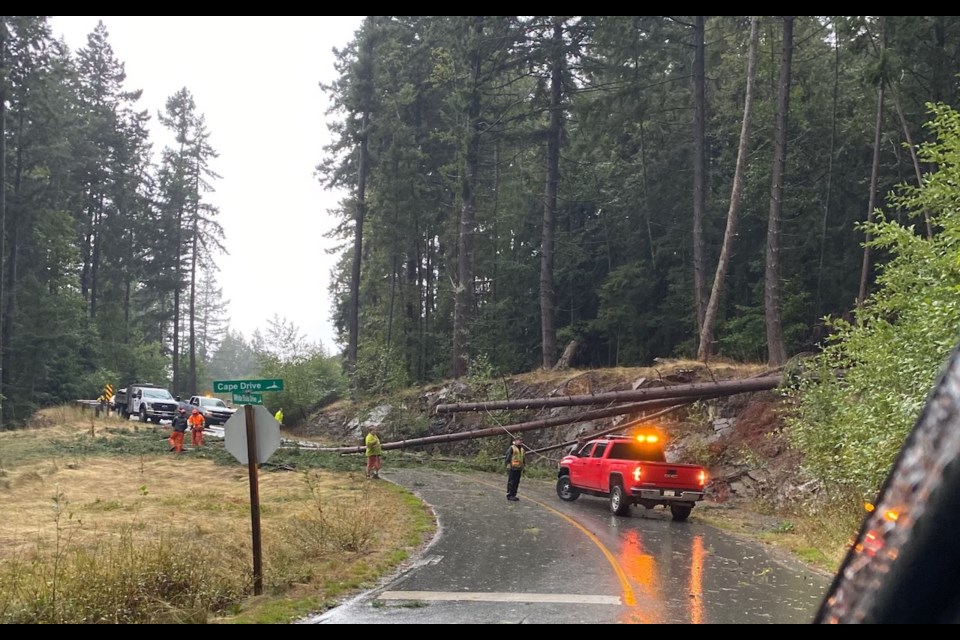The effects of this year’s long, hot summer were in plain sight on Friday evening during the South Coast’s anomalous late summer rainstorm. Public Works staff toiled after hours securing areas of concern, such as downed power lines, and removing trees that had toppled onto transportation routes. Between the hours of 4 p.m. and 8 p.m., Public Works attended five calls for service. The Bowen Island Fire Department was also busy responding throughout the evening to reports of trees into structures, downed power lines and live wires as well as a downed power pole.
Part of the reason that this moderate summer storm wreaked so much havoc on our tiny, forested island is that this past season’s drought has left trees weakened and unhealthy. Drought has long-term effects on tree health and is not always externally visible. Be on the lookout for the following indicators that a tree may need to be assessed:
- Curling or wilting leaves
- Leaves or needles falling when they haven’t matured
- Drooping branches
- Thinning canopy
- Yellowing or browning in leaves
- Poor or stunted growth
- Evergreen trees with discoloured tips
If you think you have a tree on your property that needs attention, please seek out an arborist to assess the tree’s health especially if the tree is located near a structure, roadway or power lines.
Residents and visitors to Bowen Island should also be aware when walking or hiking in treed areas in windy conditions. If you’re heading into a familiar area, you are probably aware of seasonal wind patterns but if you are relatively new to a trail, check the local forecast for wind or weather advisories before you head out. Weather updates can be found on the Environment Canada website. If you can, find the latest weather forecast for the exact area you’ll be hiking in.
Why should you care about trees during high winds?
Seemingly innocuous smaller detritus such as branches, bark, pinecones, leaves and other tree parts suddenly become dangerously unpredictable projectiles.
High wind events tend to groom treetops of dead wood (picture flying logs).
Beyond flying logs and tree appendages hurling past you at high speeds, the tree itself could break off and, hypothetically, if there was a fight between you and a falling tree, the tree would win. Every. Time.
The best way to avoid this fate is to stay well away from treed areas during windy weather events.
It’s best to stay away from hiking during heavy rainfall events as well. Trees sink their roots into soil and when that soil gets saturated (like during the atmospheric river event we had on Friday) the roots lose their purchase and can tip the crown of the tree to the ground. This afflicts all trees, regardless of disease, and there’s no way to predict when a tree is going to fall. And although Bowen managed to escape this year’s devastating fire season unscathed, it’s worth mentioning that forests that are recovering from wildfire will be more susceptible to falling trees during times of inclement weather.
If you are caught out in a forested area during wind or heavy rain and if it’s minimal distance and reasonable to do so, try to hike back out of the danger area. If egress is not safe, try to find a rocky but stable overhang or a large, hollow log to hunker down beside or inside. Try not to succumb to panic and logically think through the safest resolution to your situation.



